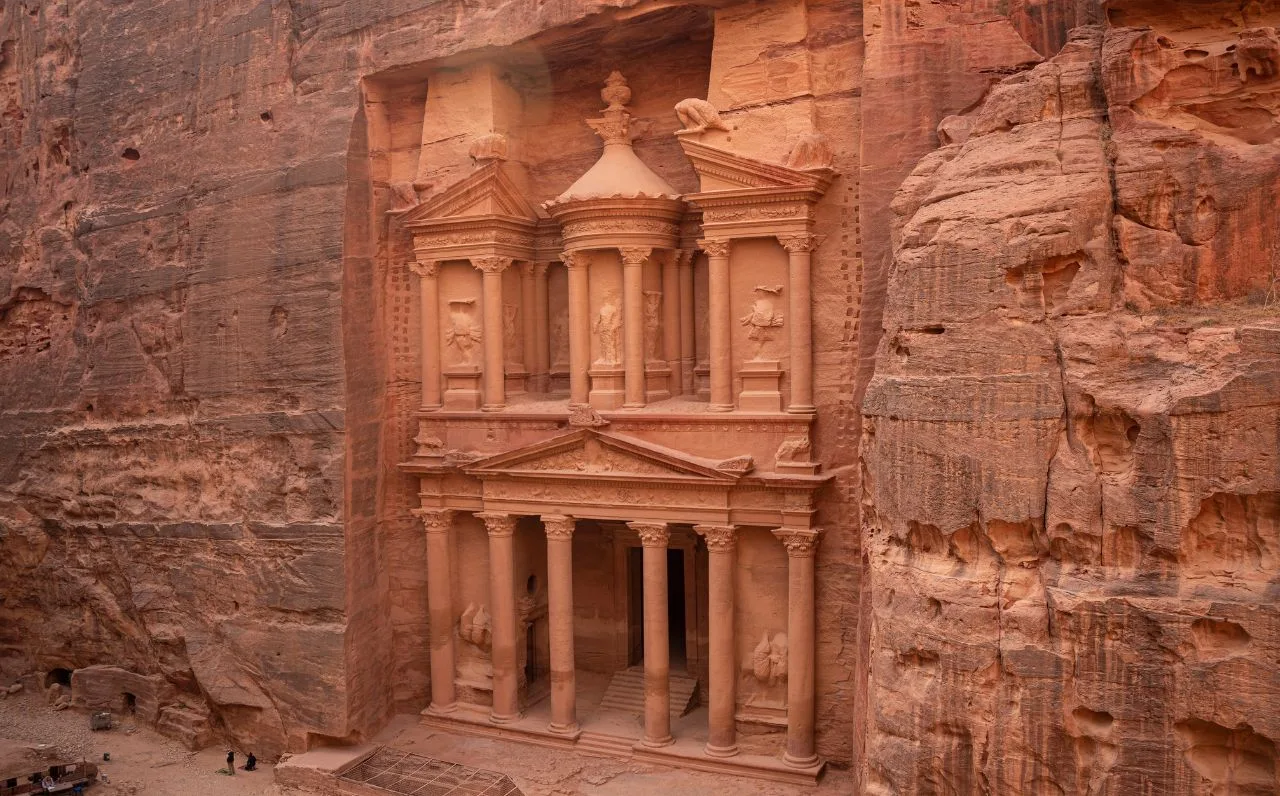In Petra, Jordan, a tomb containing at least 12 human skeletons and artefacts estimated to be over 2,000 years old has been uncovered beneath the Khaznah or Treasury. This discovery sheds new light on the ancient Nabataean civilisation and their burial practices.
The Treasury is an elaborate mausoleum carved into the pink sandstone cliffs and has long been Petra’s most iconic structure. It is believed to be at least 2,000 years old and was named one of the New Seven Wonders of the World in 2007. While no skeletal remains have ever been discovered inside the Treasury itself, it is widely accepted that the monument served as a mausoleum, despite ongoing scholarly debate.
The monument has gained fame through various films, notably ‘Sinbad and the Eye of the Tiger’ (1977) and ‘Indiana Jones and the Last Crusade’ (1989), where it was portrayed as the resting place of the Holy Grail.
This recent excavation was led by Dr Pearce Paul Creasman, Executive Director of the American Center of Research. His team embarked on the project following long-standing speculation about hidden chambers beneath the Treasury. Two tombs had previously been discovered beneath its left side in 2003, but no further evidence had been found until now.
Earlier this year, Dr Creasman’s team employed ground-penetrating radar, a technique using radar pulses to detect underground features, to examine whether the characteristics on the right side of the Treasury mirrored those on the left. The discovery of these parallels led to the team receiving permission from the Jordanian authorities to begin excavations.
In August, working with the crew of Discovery Channel’s ‘Expedition Unknown,’ the team unearthed a previously undiscovered tomb. Remarkably, the tomb contained complete skeletal remains and grave goods made from bronze, iron, and ceramic. Many of the tombs in Petra had previously been found disturbed or empty, making this an extraordinarily rare find.
Dr Creasman noted that this intact burial provides a unique glimpse into the lives of the Nabataeans, an ancient Arabian people who thrived in the region from the 4th century BC to AD 106. He highlighted that nothing comparable had been discovered in Petra’s two centuries of archaeological exploration.
Josh Gates, host of Expedition Unknown, described the find as exceptional, especially considering it was located in front of one of the world’s most famous landmarks. The discovery of at least 12 skeletons is believed to be one of the largest collections of human remains found in Petra to date.
Among the artefacts was a ceramic chalice, found clutched by one of the skeletons, which bore a striking resemblance to the Holy Grail, as depicted in Indiana Jones and the Last Crusade. Gates noted that this is a remarkable convergence of history and popular culture in this discovery.
The burial site’s prime location near the main entrance to the ancient city suggests the individuals interred there were of significant importance. Gates speculated that uncovering their identities could reveal further secrets about the Treasury and Nabataean society.
The Nabataeans’ burial customs remain a mystery. Their society is often described in literature as more egalitarian than other ancient civilisations, with rulers more closely integrated with lower classes. According to Dr Creasman, it is difficult to ascertain whether the newly discovered tombs beneath the Treasury were meant for royalty, as there appears to be little distinction between royal and non-royal burials found thus far.
The full details of this discovery are featured in the latest episode of Expedition Unknown (season 14, episode 1).
